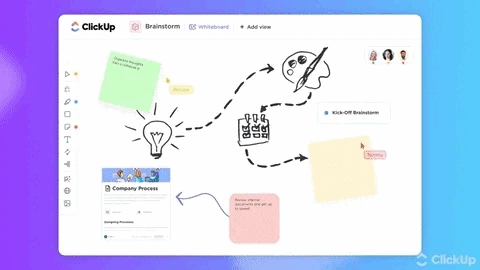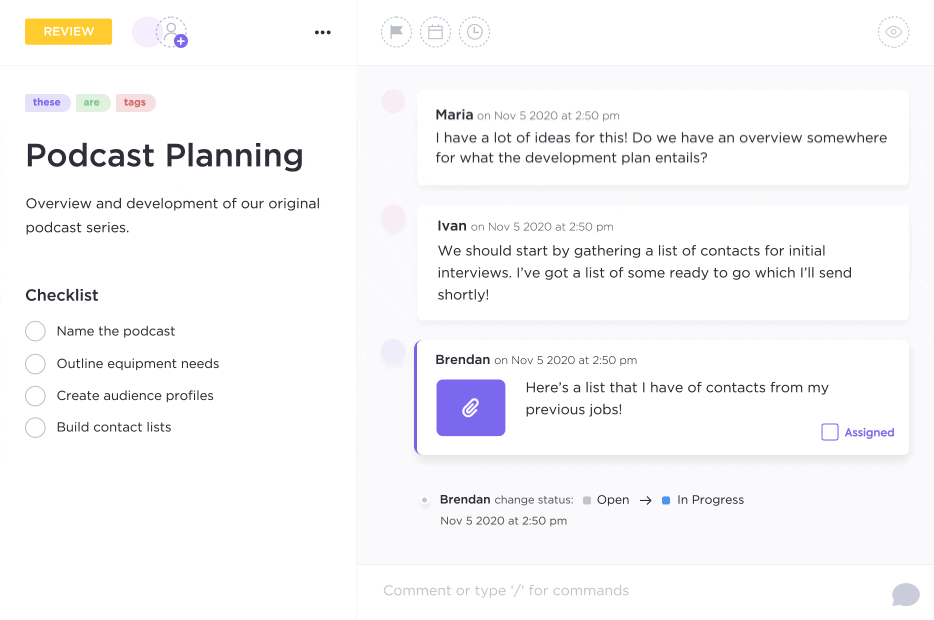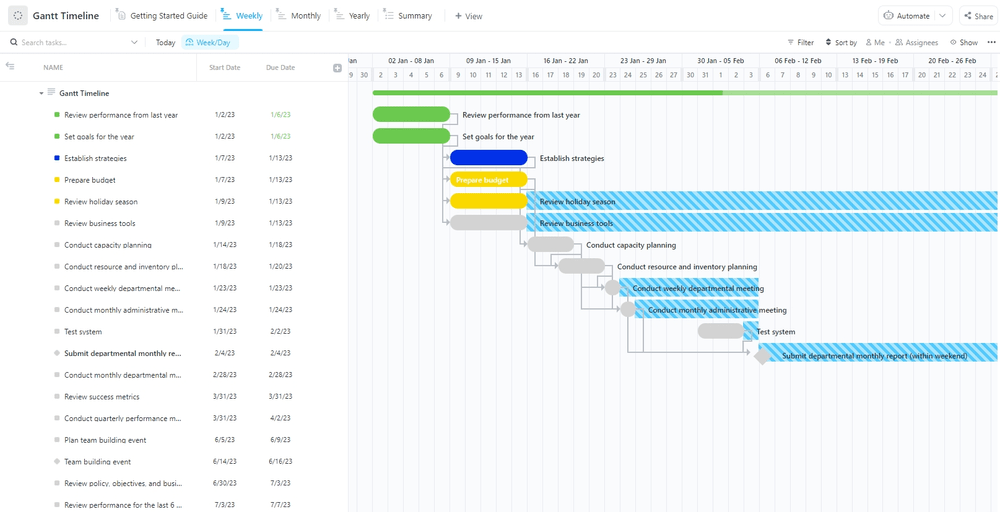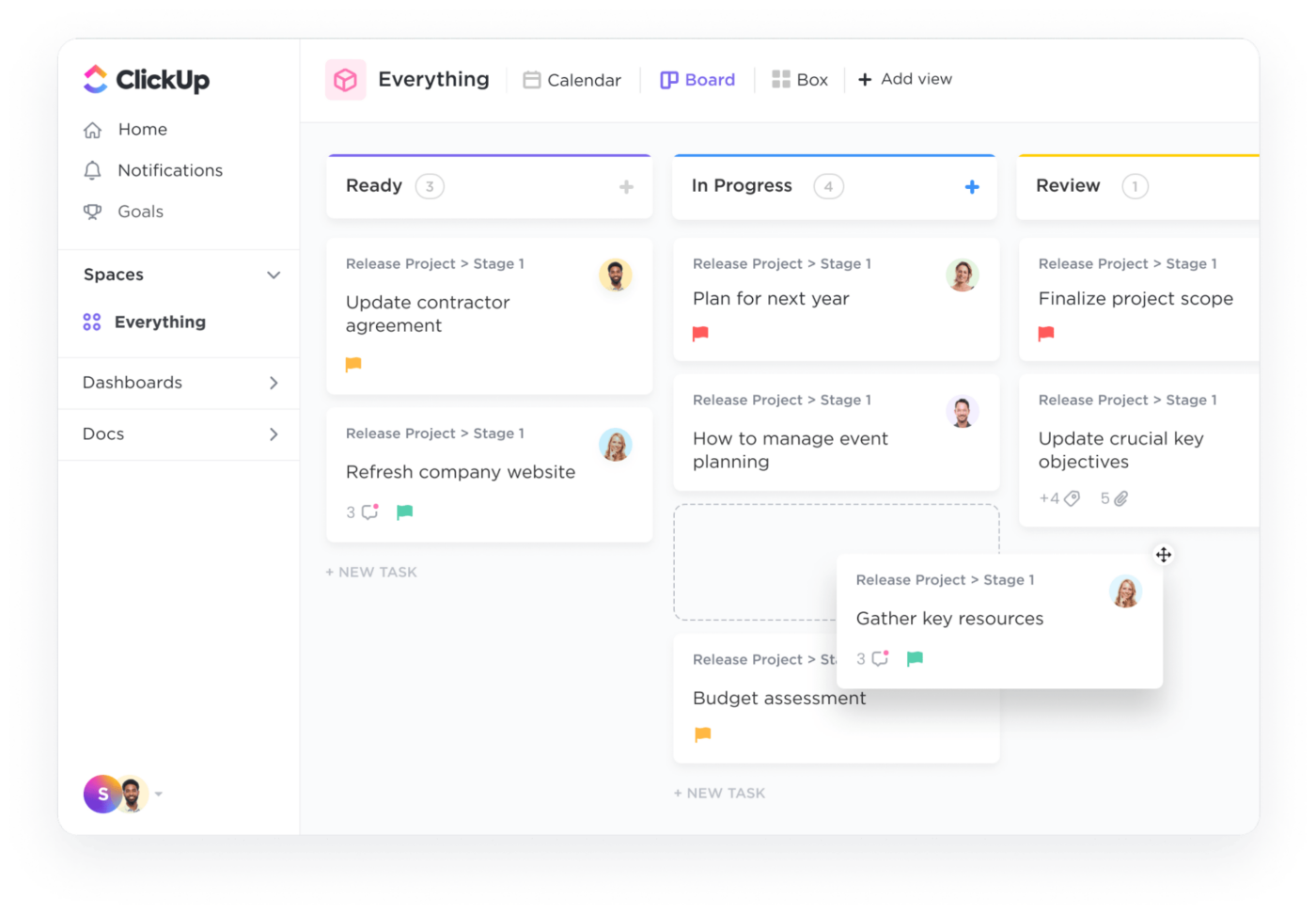10 Visualization Techniques to Achieve Your Goals

Sorry, there were no results found for “”
Sorry, there were no results found for “”
Sorry, there were no results found for “”

Whether you’re a C-suite executive or kick-starting your professional career in an entry-level role, setting goals is key for continued growth.
Goals lay the groundwork for your daily tasks, provide a roadmap to success, and create the framework for learning—but there’s a range of strategic processes behind goal-setting to ensure you’ll reach your best results.
One of our favorite ways to achieve your goals is to use various visualization techniques. In fact, visualization is popular among people at the top of their game—from Olympic athletes to entrepreneurs.
In this article, we’ll dive into what visualization is and its benefits. Plus, we’ll share 10 of our favorite visualization techniques to get started. ✨
Here are 8 key visualization techniques to help you achieve your goals:
Visualization is the act and practice of creating a mental image of your goals. By imagining how a particular event will look, you can work backward and create smaller steps to help you make that goal a reality.
Think of it like a mental training exercise. This technique involves considering positive outcomes and imagining what it will take to get there. It requires more than a daily affirmation or positive mental dialogue to master this process, though. Visualization techniques enhance those practices by incorporating all five senses and giving you tools to create actionable tasks.
Visualization is tied to the law of attraction, which is a philosophy that believes positive thoughts bring about positive outcomes. That means that visualization should always be a positive exercise. 🧲
You want to imagine the desired outcome for your goals. Envision nailing the interview for your dream job or how it would feel to land the promotion you’ve been working toward. Whether you’re planning out your personal life or professional goals for work, visualization can help you achieve your dreams.
The power of visualization is unparalleled. From neuroscientists to professional athletes and CEOs, all kinds of highly productive and fulfilled people credit these techniques as part of their success. 🏆
Here are some of the many benefits behind visualization techniques:
There are many different ways to bring your goals to life. Whether you’re life planning or looking for ways to take your career to new heights, here are effective visualization techniques to try today. 🙌
Much like strategic planning software, a vision board lays out a vision and road map for your goals. This simple technique involves creating a visual representation of your dreams. Add images of the things you want—whether it’s a new job, a skillset, or an acquisition. Get started with ClickUp’s Vision Board Template!
Find or take pictures related to this goal as if you’ve already achieved it. That might mean snapping a photo of yourself in front of a new headquarters or conducting high-level meetings. You can also create a board featuring images of what you want to achieve. Say you want to be a published writer—add a picture of a book with your name as the author to your vision board.
Real life can get in the way of goal planning, and it’s easy to make excuses. You find yourself putting things off until tomorrow, or you feel like giving up. Maybe you turn to distractions, like binge-watching a TV show, instead of getting work done.
Try breaking the goal down into smaller steps to overcome these challenges. By turning a larger goal into smaller actionable items, you get to celebrate little wins along the way. Plus, it makes tackling the bigger goal seem less daunting. 🏅

Use a daily planner app to schedule time to consider your goals. Take 10 minutes once or twice a day to review your progress and think of what steps come next. Use this time for positive thinking, and focus on what you’re doing well to reach your goal.
When you visualize your goals, you want to bring them to life. The best way to do that is to incorporate all five senses. These sensory details make your goal real and feel attainable.
Create a picture in your mind of what you and the people around you will look like when you achieve your goal. Are others smiling? Are you wearing your best suit standing in a brand-new office?
Build a complete sensory experience around your goal. Even go as far as to wonder:
Then consider sounds, smell, and touch. Ask yourself questions like:
We might’ve taken a few leaps there, but you get the idea. 🤓
By incorporating all five senses into your visualization process, you can really get a feel for the moment. It’ll inspire you to put in the effort to bring those imaginary moments to the real world.
A success map is a tool that helps you visualize every step on the road to your goal. Consider it the treasure map of your professional dreams. Use it to map out individual tasks that you need to accomplish to get to your end goal.

Be sure to make each step actionable and measurable. Organize tasks in chronological order, and plot them on a timeline to keep a schedule. This way, you’ll be less likely to get distracted or head off course. 🗺️
If you’re a creative person, turn ideas into art by drawing out your goals. This creative visualization technique makes goal planning more fun by lightening the mood.

Create digital versions of your goal with a visual tool like ClickUp Whiteboards. Use this digital whiteboard software to draw rough sketches of your goal roadmap. Add rough mockups of design elements and reference the board every day to visualize your goals before diving into deep work.
Alternatively, use an artist’s medium for your visualization, like watercolors to paint an ethereal vision of your professional goals.
Once you’re done with your artwork, put it where you’ll see it each day. Take time to really admire your work and visualize how you can turn that work of art into reality.
Most of the time, your goals will involve personal development. To get where you want to be, you’ll likely need to learn new skills, develop new habits, and adapt to challenges. Visualizing what resources you need in order to build those skills can make the process easier.
Consider asking someone to be your mentor. Another option is to attend training or take classes to build skills that are integral to meeting your goal. The idea here is to focus on growth and build development into your process.
Resources aren’t just big-picture items. Everyday things like flashcards can help you visualize your goals.

Jot down behaviors and habits that you want to reinforce each day. In the mornings, take a look at your flashcards and visualize how you’ll achieve your goals before doing anything else. 🛠️
Mental rehearsal is a popular visualization technique among Olympic athletes. World-famous skier Mikaela Shiffrin visualizes her entire race before she even gets into the gates. In videos, you’ll see her at the top of the piste, eyes closed, moving her body as she simulates skiing down the slope.
This visualization practice involves mentally imagining yourself completing your goal in detail. Walk through different tasks and steps in your head, imagining how you’d react to obstacles. Imagine what it looks and feels like to do the work and achieve success.
Affirmations are a powerful visualization technique that focuses on describing your goal as if you’ve already accomplished it. The key here is to be positive and not think too much about the “what if” challenges or difficulties.
This positive visualization technique is all about making your goals feel realistic. Write down your affirmations and refer to them each day. 💪
Here are some examples of affirmations you can use as inspiration:
When you’re actively visualizing your goals, you spend a lot of time thinking about the future. At the same time, it’s important to appreciate the present moment and how your efforts today can get you where you want to be tomorrow.
That’s where meditation comes in. Neuroscience has shown connections between meditation and activating the subconscious mind. This technique can help you focus on your goals and tune out distractions.
Do meditation by yourself or follow a guided visualization with a professional. Find a quiet place and get comfortable. You can lie down or sit up and choose a calming playlist if that helps you find your center.
During the session, take deep breaths, and dream up mental imagery that is connected to your goals. For example, if you want to land a promotion, picture yourself in the corner office working with clients you’ve dreamed about.
You can also try guided imagery. A technique where words and music are used to dream up optimistic scenarios tied to your goals.
One of the most helpful visualization exercises is journaling. It forces you to reflect on your progress every single day. Plus, it creates a road map and reference tool that you can refer to as you achieve small wins.

Use ClickUp Docs to jot down a daily review of what’s been achieved, what you’re working on, and what’s up next. Create tasks automatically based on your entries, and schedule them to your to-do list.
You can choose to make the journaling process creative or rigid. For a creative approach, consider your emotions, and write down what your dream goal would be. If you prefer a rigid style, stick to listing the tasks you’ve completed and actions you need to take next. 📓
There are many different ways to track your visualization goals. From data visualization techniques and goal-tracking apps to written summaries and timelines, the possibilities are endless. Here are a few ways to monitor your progress as you visualize your goals. 🌻
What makes visualization complicated is that it’s easy to get distracted or discouraged. Using a project management tool can help you stay on track to success.
Data visualization tools provide a way to view your data in a more intuitive and interactive format, making it easier to identify patterns, trends, and insights that may not be immediately apparent in raw data.
ClickUp’s Goals feature makes it easy to create, schedule, and track your objectives. Whether it’s a life-changing achievement that will take a year to reach or a smaller quarterly goal at the office, it’ll help you get the job done. ✍️
Use the feature to create folders to store multiple goals in one place. Here, you can track scorecards, objectives, and key results. Divide them up for different employees if you’re a manager, or create segments for your own personal goals.

With the monetary, numerical, and true/false Targets, you can keep track of smaller steps on the journey to your main goal. Use data visualization tools like histograms, heat maps, bar charts, bar graphs, and pie charts to further visualize your success.
Create Custom Fields, and assign task due dates to ensure you stay on top of your goal progress. You can set tasks for daily journaling, craft a goal road map, and store educational resources—all in one space.
Goal setting is difficult. Oftentimes goals are vague or too specific. More often, there isn’t a clear path, so it’s hard to create smaller steps to reach the overall goal. That’s where SMART goals come in.

The concept of SMART goals is based on an acronym that lays out a set of criteria to create real, actionable goals. It stands for:
This technique is all about creating clear, realistic goals that can be measured and attached to a timeline. Not only are your expectations clear but so is the path to meet your goals.
To write a SMART goal, use ClickUp’s SMART Goals Template. This template lets you draft your goal, visualize your progress, and organize tasks in easy-to-manage steps to set yourself up for success. 🤩
Start by creating a specific goal, and consider the who, what, where, when, and why that will play a role in achieving it. Next, develop criteria to make your goal progress measurable.
Be sure that your goal is attainable and relevant, assessing the resources you will need and why this goal is important to you. Finally, create a timeline to achieve your goal, and keep yourself accountable throughout the process.
Use these common visualization techniques to get you closer to your goals and eliminate distractions. With these 10 techniques, you can use creative processes or schedule-oriented approaches to get where you want to be.
Sign up for ClickUp today, and get started creating and tracking your goals. Use the Goals feature to create processes for visualization. Turn to templates to create actionable goals, and use data to monitor your success. Automate task creation to stay on top of manageable steps that lead you to the goal you’ve visualized. ✨
© 2026 ClickUp